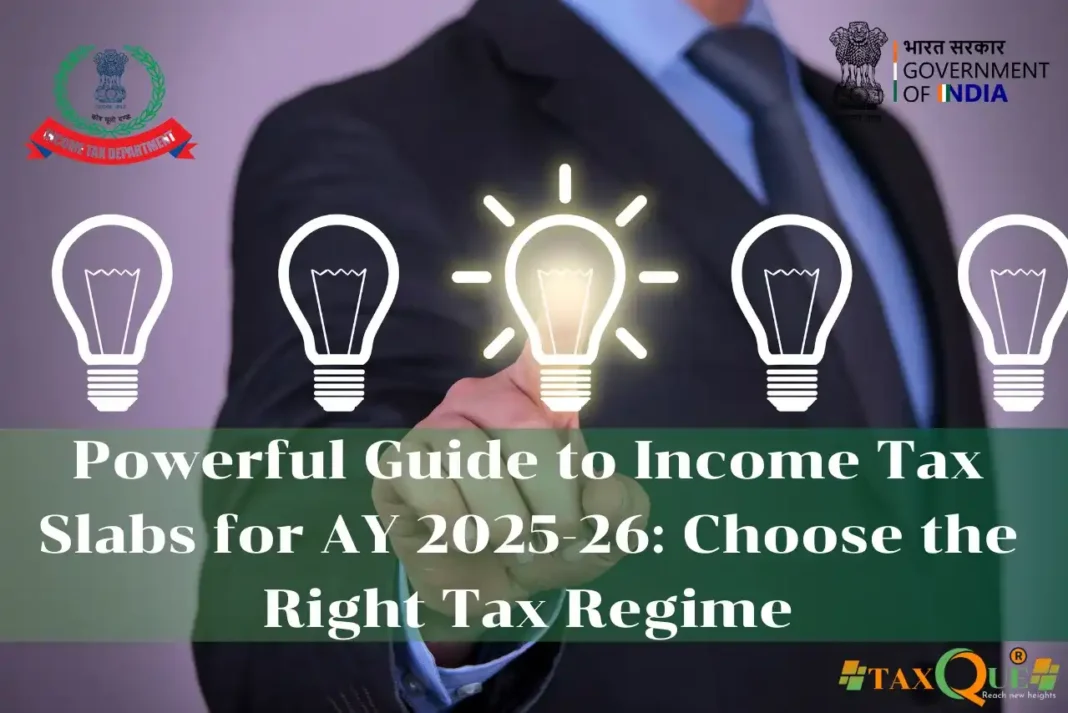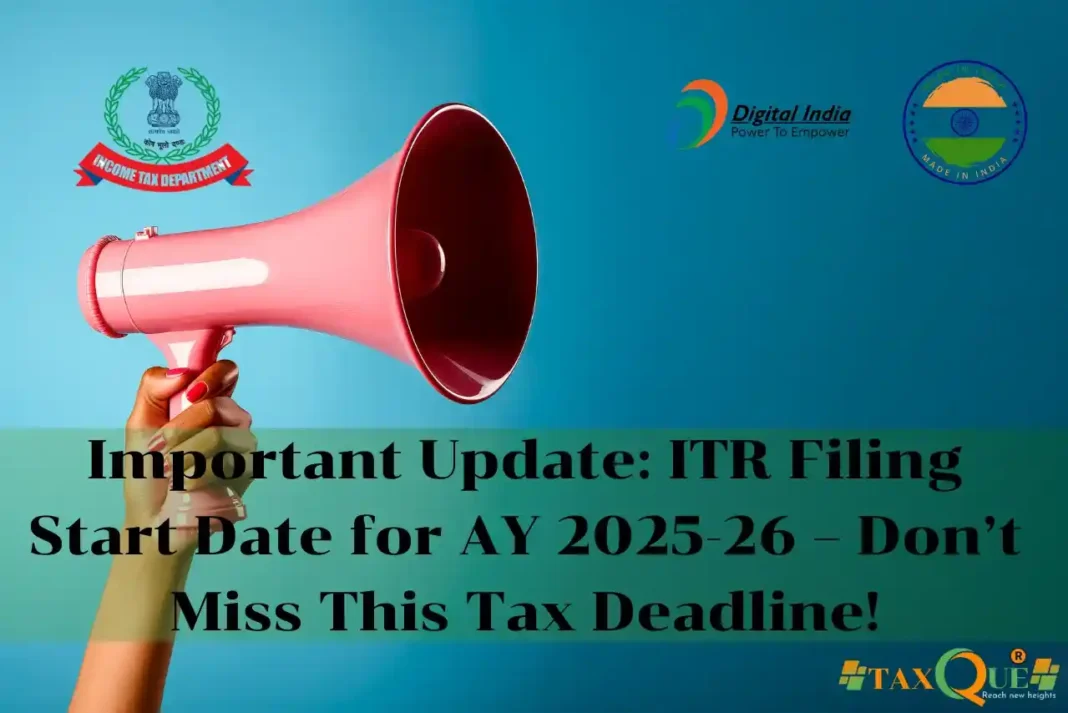Introduction
Understanding the income tax slabs for AY 2025-26 is crucial for every salaried individual, freelancer, and business owner in India. The government has continued with the dual tax regime system, giving you the freedom to choose the one that suits your financial situation best. With tax season approaching, it is important to understand these slabs, how they impact your net income, and the most efficient way to file your Income Tax Return (ITR).
In this article, we’ll walk you through the current tax slab rates under both the old and new tax regimes, compare the benefits, and help you make an informed decision. We’ll also recommend the best platform to file your taxes quickly and accurately.
Income Tax Regimes in India: Old vs New
The Indian government introduced the new tax regime in FY 2020-21 (AY 2021-22) to simplify the income tax process. However, both regimes continue to coexist, and you are free to opt for either depending on your financial structure.
- Old Tax Regime: Offers deductions under sections like 80C, 80D, HRA, and LTA.
- New Tax Regime: Offers lower tax rates but eliminates most deductions and exemptions.
Let’s break down the slab-wise rates for AY 2025-26 under both regimes.
Income Tax Slabs for AY 2025-26
🔹 Old Tax Regime
| Income Range (₹) | Tax Rate |
|---|---|
| Up to ₹2,50,000 | Nil |
| ₹2,50,001 – ₹5,00,000 | 5% |
| ₹5,00,001 – ₹10,00,000 | 20% |
| Above ₹10,00,000 | 30% |
Note: Individuals earning up to ₹5,00,000 can still avail rebate under Section 87A, making their net tax liability zero.
🔹 New Tax Regime (Default Option from FY 2023-24)
| Income Range (₹) | Tax Rate |
|---|---|
| Up to ₹3,00,000 | Nil |
| ₹3,00,001 – ₹6,00,000 | 5% |
| ₹6,00,001 – ₹9,00,000 | 10% |
| ₹9,00,001 – ₹12,00,000 | 15% |
| ₹12,00,001 – ₹15,00,000 | 20% |
| Above ₹15,00,000 | 30% |
✔️ Under the new regime, a standard deduction of ₹50,000 is available for salaried and pensioners.
Which Tax Regime Should You Choose?
The decision depends on your income and your eligible deductions. Here’s a simple comparison to help:
| Feature | Old Regime | New Regime |
|---|---|---|
| Basic Exemption Limit | ₹2.5 Lakh | ₹3 Lakh |
| Deductions under 80C/80D | Available | Not Available |
| Tax Rates | Higher | Lower |
| Standard Deduction | ₹50,000 | ₹50,000 (Now allowed) |
| Suitable for | High deductions | Simple tax structure |
If you claim deductions such as housing loan interest, LIC premiums, ELSS, and health insurance premiums, the old regime may offer more savings. On the other hand, if you prefer a simplified structure with reduced tax rates, go with the new regime.
Additional Considerations for AY 2025-26
- Senior Citizens (60–80 years): ₹3 lakh exemption under old regime
- Super Senior Citizens (80+ years): ₹5 lakh exemption under old regime
- Section 87A: Rebate of up to ₹12,500 for income up to ₹5 lakh
- Surcharge & Cess: 4% health and education cess applies to all income tax
- Opting In or Out: Salaried individuals can choose the regime each year. Business owners must follow specific rules.
How to File Your ITR Efficiently?
Filing taxes correctly is as important as understanding the slab rates. We strongly recommend using TaxQue — a reliable and user-friendly tax filing platform trusted by thousands of professionals, salaried individuals, and small business owners.
✅ Why Choose TaxQue?
- Quick and secure ITR filing
- Expert-assisted plans available
- Tax optimization recommendations
- Saves time and reduces chances of error
- User-friendly dashboard and reminders
💼 Whether you’re a first-time filer or a seasoned professional, TaxQue makes tax filing hassle-free and accurate.
Conclusion
Choosing the right tax regime and understanding your applicable Income Tax Slabs for AY 2025-26 can make a significant difference in your tax liability. With both old and new regimes offering their own set of benefits, your decision should be based on your income composition, deductions, and future planning.
Don’t wait until the deadline. Use TaxQue to file your ITR confidently, correctly, and stress-free. It’s time to take control of your finances and stay tax-smart!





